How to Choose the Best Outdoor Pizza Ovens

Introduction
The manual's instructions for assembly, setup, ignition, cooking, and cool-down were followed to test each oven. For the most accurate experience, make use of the peels, tools, etc., that were shipped with that particular oven. We also wanted to evaluate the performance of each oven using several dough varieties.
Use at least one of the following pizza dough varieties: homemade, store-bought frozen (Wegman's), store-bought refrigerated (Trader Joe's), and dough obtained from a neighboring pizza joint that specializes in thin-crust pies. Make many pies in each oven.
The oven should be switched on, though, to cook Margherita pizzas with just tomato sauce and hand-torn mozzarella as toppings, to keep things equally basic (and fair).
Check the oven's ease of setup, how hot it gets inside and out, and how easy it is to adjust the temperature in addition to how well it cooks. We also looked at how easy it was to add fuel for models made of wood or wood pellets.
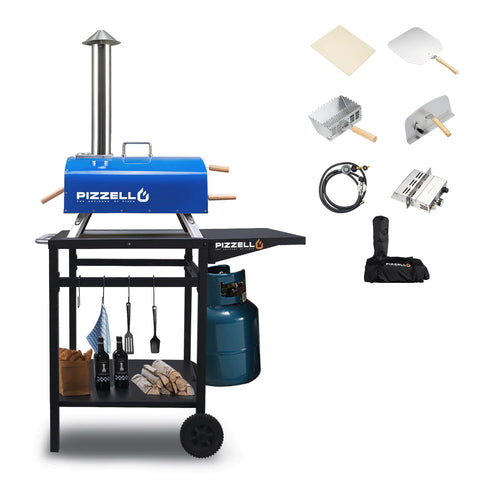
Pizzello Brand Outdoor Ovens
For outdoor gatherings, Pizzello has a variety of outdoor ovens. In every way, it is the best. Let's go through some of the main reasons why Pizzello Brand outdoor ovens are the best option.
Some common brands of Pizzello are given below.
- Pizzello Forte Gas - Outdoor Pizza Oven Propane & Wood
- Pizzello Gusto - 4 In 1 Outdoor Pizza Oven
- Pizzello Grande - Outdoor 2-Layer Pizza Oven
- Pizzello Molto - Outdoor Portable Wood-Fired Pizza Oven Camping Stove
Some key points need to much considered.
Oven size
Consider the size of your patio, the amount of storage space you have available, and whether or not you want to routinely take your pizza oven on camping vacations when choosing the size of the best outdoor pizza oven for you. Some are more substantial and heavy than others, making them challenging to transport while not in use.
Pizza Peel
Pizza peels are the long, flat wooden shovels you see being used to move pizza into and out of the oven (others are available for separate purchase). Without one, pizza cannot be created. We advise using the peel that comes with your oven because it is the proper size for the cooking area.
If you want to get more gear, you can also grab a "turning" peel. These are smaller than a regular peel and are made of a flat, round piece of metal. They are frequently smaller in diameter than the pizza itself to make it simple to rotate the pizza while it is still in the oven. You must practice using it appropriately.
We found that the best results were obtained by flouring the surface (semolina flour works well, especially for hotter ovens) and making the pizza directly on the peel before putting it in the oven. You must also use a peel to turn your pizza as it cooks if you want a beautiful, even char.
Maximum Temperature
Pizza baking generally always favors higher temperatures. To achieve a fluffy, crispy, barely-burnt crust and perfectly melted cheese, the traditional method for producing real Neapolitan pizza calls for heating it in a wood-fired oven at a minimum temperature of 800 degrees for only 60 to 90 seconds. To produce excellent pizza, you need a special pizza oven, which must be significantly hotter than a regular oven. The power of outdoor wood-burning heaters, which can reach temperatures of up to 900 degrees, is superior to that of indoor electric heaters. To keep heat within the oven and maintain very high temperatures, many ovens include an insulated or double-layered ceiling. Some ovens have twin heating sources on the top and bottom of the oven to regulate the baking of the crust and toppings.
Design
All of the small and medium-sized pizza ovens available today are stylish, contemporary, and finished in stainless steel. They also all have an inside baking surface for pizza stones. Instead of silver, some models can be found in black or gray, however, this is not the case for most.
The heat source in smaller pizza ovens is typically located at the back of the oven. To more efficiently heat the pizza, the flame is frequently permitted to partially traverse the oven roof in open-flame ovens. The oven's vaulted roof is intended to mimic the heating pattern of standard brick ovens.
Portability
Smaller pizza oven models have detachable parts and folding legs so you may cook outside when camping, at a friend's backyard BBQ, or anywhere else. Portable pizza oven parts are normally kept together in a carrying bag, and they are designed to be quickly put together and taken apart. A portable oven may not necessarily be light, so keep that in mind while selecting one. Others top the scales at more than 50 pounds, while some folks only weigh 25 pounds. Larger stationary ovens can't be moved about often, and some of them are designed to link to your home's gas line, making them essentially fixed.
Price
Investing in a pizza oven can be expensive, especially if you choose a high-end model that is designed to provide results that are of a professional caliber. Several affordable units cost under $100, but a unit that can reach the high temperatures needed for excellent pizza may cost you several hundred dollars.
A decent modest outdoor gas oven costs between $300 and $500; wood-burning models cost slightly more. But for that amount, you could anticipate using your oven for many years, just as you would if you spent that much on a high-quality grill.
-
Fuel source
Aside from the price, the fuel source is the most important factor to take into account when buying a pizza oven. Gas, charcoal, or wood pellets can be used to heat ovens; indoor models also offer electric heating options. Before choosing an outdoor pizza oven, decide which type of heat source is best for you. Pizza baked in wood, wood pellet, or charcoal ovens had a smoky flavor similar to that of a high-quality grill during tests, though propane ovens were easier to operate. Additionally, it is easier to tote a bag of charcoal or wood pellets than a tank of propane if you plan to take your pizza oven camping or to a tailgate party.

Frequently Asked Questions
- What kind of surface and how much room around it does a pizza oven require?
Former pizzaiolo and food writer Dennis Lee continues, "Thank thing, pizza ovens can be quite compact. Many home pizza ovens are mobile, independent machines that may be placed on top of a patio table. For easy storage, you can usually disassemble them. The tiny home ovens can cook pizzas with a diameter of 12 to 16 inches, but they must be used outside for ventilation and safety concerns. Additionally, those ovens only need a small amount of space to accommodate the chimney at the back without directly touching the ceiling.
When we inquire about the difference between a wood and gas pizza oven, Lee replies, "It all comes down to the fuel." "A wood oven is heated by burning hardwood, such as oak, whereas a gas pizza oven uses a fuel source like a propane tank or natural gas. Wood-fired pizza ovens use burning wood as their sole source of heat, which is an interesting and rustic way to cook food, albeit the procedure can be difficult. Because flames are so close to being living beings, you must constantly check to make sure the oven is at the proper temperature and adjust as needed by adding more wood or pausing the fire. Because these ovens take a while to heat up, you must maintain them by clearing off soot and ash after each use.
-
How does a pizza turn out?
Turning a pizza could be difficult for many people. A pizza can only be turned successfully using a peel. Once the pizza has been placed, let it there until the bottom has set (the amount of time varies on the dough type and the temperature of the oven). Either the left or right side of the pizza should be placed with the peel underneath it. After tilting the peel up by about 45 degrees, carefully pull back on the pizza while leaving about a third of the crust on the oven deck. As soon as you detect that the pizza's crust is getting a little browned on one side, do this. The pizza will spontaneously rotate due to the friction of the dough and the angle of your pizza peel. Since it requires a lot of repetition and muscle memory, you'll need to practice a lot before you've mastered it.
-
Other than pizza, what else can you cook in a pizza oven?
Vegetables, meats like steak or sausage, and breads like focaccia or sourdough—anything you'd typically cook on a cast iron skillet or porcelain—can all turn out superbly in a pizza oven. To prevent fats and oils from dripping onto the hot surface and igniting a fire, the surface of the pizza oven should always be covered with a temperature-resistant material, such as cast iron.


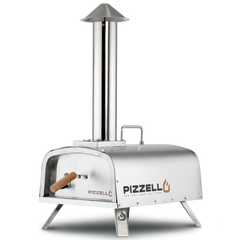
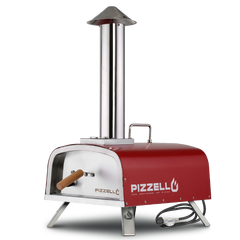
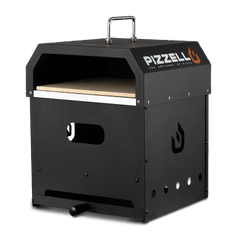
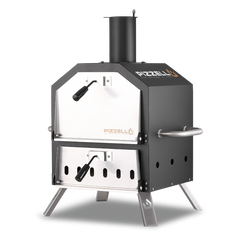
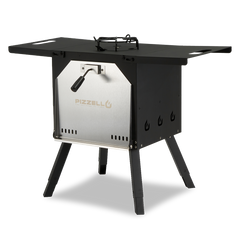



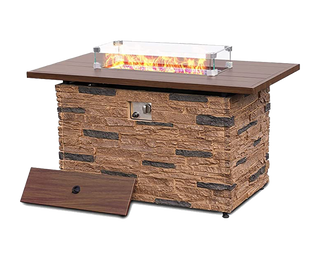
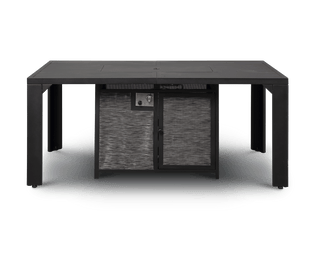
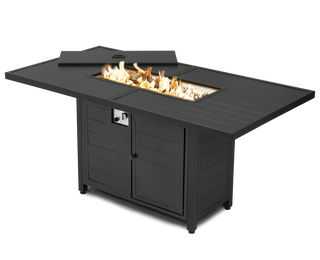

 Dining Table
Dining Table
 Cart
Cart
 Cart Pro
Cart Pro
 Pizza Stone
Pizza Stone
 Gas Burner
Gas Burner
 Pizza Peel
Pizza Peel
 Dining Chairs
Dining Chairs
 Wind Guard
Wind Guard
 Fire Glass Bead
Fire Glass Bead
 Waterproof Cover
Waterproof Cover















